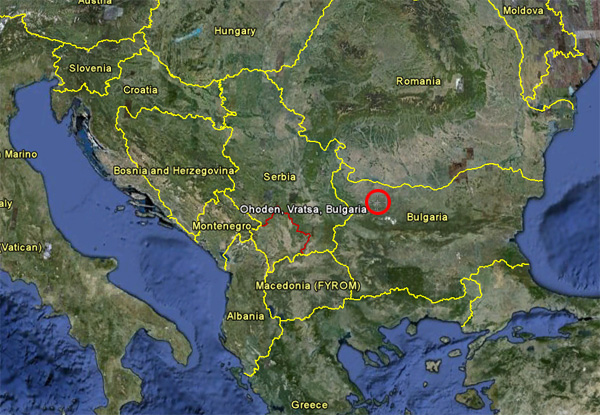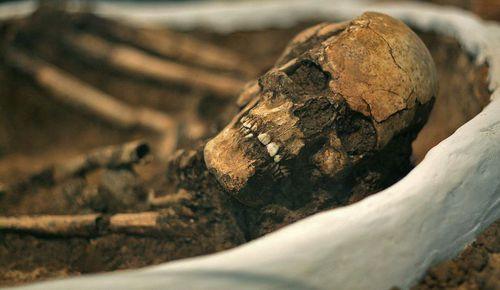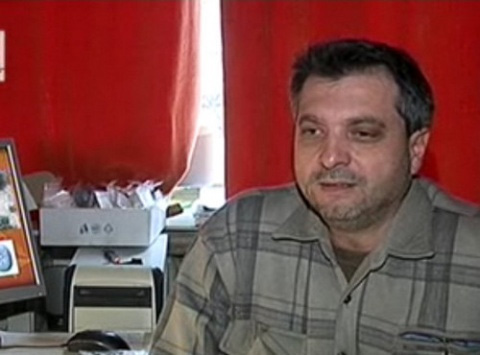8000 year-old Sun temple found in Bulgaria
Source: sofiaecho.com

The oldest temple of the Sun has been discovered in northwest Bulgaria, near the town of Vratsa, aged at more then 8000 years, the Bulgarian National Television (BNT) reported on December 15 2010.
The Bulgarian 'Stonehenge' is hence about 3000 years older than its illustrious English counterpart. But unlike its more renowned English cousin, the Bulgarian sun temple was not on the surface, rather it was dug out from under tons of earth and is shaped in the form of a horse shoe, the report said.
The temple was found near the village of Ohoden. According to archaeologists, the prehistoric people used the celestial facility to calculate the seasons and to determine the best times for sowing and harvest. The site was also used for rituals, offering gifts to the Sun for fertility as BNT reported.
This area of Bulgaria was previously made famous because remnants of the oldest people who lived in this part of Europe were found.
Archaeologists also found dozens of clay and stone disks in the area of the temple.
"The semantics of the disks symbolise the disk of the Sun itself, which means that this is the earliest ever temple dedicated to the worship of the Sun God, discovered on our lands," archaeologist Georgi Ganetsovski told the BNT.
Source: sofiaecho.com
8,000-year-old remains found in Bulgaria

From: sofiaecho.com
Bulgarian archaeologists, led by lecturer Boris Borissov from the university of Veliko Turnovo, unearthed a skeleton estimated at 8000 years old, Bulgarian media reported on October 25 2010.
The remains were found while land was being cleared for the construction of the Maritsa motorway, en route to Turkey, near the village of Kroum, municipality of Dimitrovgrad. Experts say that the skeleton, was from the Neolithic age, dates back to 6000 BCE, and belonged to a young boy, aged 10-15.
Anthropologist Tsvetan Minkov and experts from the Dimitrovgrad museum were also called to the site. The skeleton is most likely going to end up in the museum, but its safe extraction from the grave will present a significant task. Although the teeth are reportedly in "superb condition" the rest of the skeleton is in extremely brittle state and it "almost dissolves upon touch".
According to the report, the boy was found buried in the foetal position.
Source: sofiaecho.com
Bulgarian Archaeologist Discovers World's Likely Oldest Sun Temple

From: novinite.com
Bulgarian archaeologist Georgi Ganetsovski has made a new hit discovering by unearthing what might be the world's oldest sun temple.
The team of Georgi Ganetsovski, an archaeologist from the Vratsa Regional History Museum, who specializes in paleolithic settlements, has uncovered a structure similar in function to the Stonehenge in the UK but is 3 000 years older than it.
The 8000-year-old structure has been found near the village of Ohoden, Vratsa District, Northwestern Bulgaria.
The ancient people used this sanctuary to track the movement of the sun in order to decide what is the best time for planting and harvesting their crops; furthermore, there they would offer gifts to the sun hoping for abundance of their harvests.
The floor of the sanctuary, which was uncovered from under tons of earth mass, was paved with cobblestones; the structure itself has the form of the Cyrillic letter "?", with its open end directed to the east.
"My research during the fall equinox and the measurements and tests that we made show that the shape of the structure is focused on the sunrise, and, what is more, taking into account the shifting of the magnetic poles of the Earth that occurred in the past 8000 years. Another interesting fact is that we found dozens of clay and stone discs at this spot," explained Ganetsovski as cited by the Bulgarian National TV.
In his words, in early agricultural societies the disc with a dot in the middle symbolized the sun disc, which indicates that the sanctuary is the oldest temple dedicated to the cult for the Sun god in Bulgaria, and possibly in the world.
Ganetsovski has recently presented his discovery at a prestigious archaeological forum in Romania with the participation of archaeologists from across the EU and the USA.
Ganetsovski has been excavating the site near Ohoden for years, which is believed to harbor important remains from the first agricultural communities in Europe; over the summer he found an 8000-year-old skeleton of a young man dubbed by the media "The First European."
In the summer of 2009, Ganetsovski spoke to Novinite.com (Sofia News Agency) and the Australian channel SBS TV about the troubles he had in dealing with raids by treasure hunters, who are a real plight for Bulgaria's archaeological heritage. He said that to avoid aggressive behavior on part of armed treasure hunters, he would let them search his sites because he knew that the paleolithic settlements had no metal, which is what the treasure hunters are after, and they would then leave him alone.






















